Obsessive Compulsive Disorder (OCD) and anxiety were in the news throughout 2009. Some news was good, some bad, and some flat-out ugly. Here are our votes for the top stories of the year related to OCD, Social Anxiety, Body Dysmorphic Disorder (BDD), Trichotillomania, Phobias, and Cognitive Behavioral Therapy (CBT):
The Good
Research Findings
2009 brought us closer to understanding, and ultimately finding better treatments for, Social Anxiety, Trichotillomania, and OCD. But perhaps the most noteworthy research story was the discovery that, using Cognitive Behavioral Therapy (CBT), traumatic memories can be “reconsolidated” in such a way as to reduce anxiety attached to these memories. Many equated this research to the plotline of the 2004 film Eternal Sunshine of the Spotless Mind. But this is actually better. Unlike the movie, this research doesn’t reveal ways to erase memories. Rather, it suggests a way to maintain memories, while reducing the excessive, maladaptive anxiety response to certain memories experienced by those with PTSD and phobias. And this research ultimately holds great promise for treating not just these two conditions, but all anxiety disorders.
Zack Greinke
Certainly the feel-good story of the year was Kansas City Royals pitcher Zack Greinke. In 2006, Greinke was placed on the disabled list due to Social Anxiety and depression. Greinke sought treatment, and three years later, he has a Cy Young Award on his mantel.
The Health Care Bill
Just last week, the U.S. Senate passed its version of the ever-controversial national health care bill. Both the Senate version and that of the House of Representatives appear to go a long way in finally establishing parity for the treatment of psychiatric conditions. But this item is listed here conditionally – the final bill has yet to go through conference, in which the Senate and House versions of the bill will be reconciled and presented to President Obama for signing. So there is still plenty of time for the Democrats to display their customary incompetence, and for Republicans to exhibit their seemingly Pavlovian, knee-jerk obstructionism when it comes to anything even remotely humane.
Howie Mandel
The comedian / TV star / reality show host wrote the most talked about OCD book of the 2009, Here’s The Deal, Don’t Touch Me. He is to be commended for his forthright description of his struggles with OCD and ADHD which have done a lot to confront what he rightly calls the “stigma attached to mental health”.
The Bad
Howie Mandel
No, that’s not a misprint. While Mandel certainly deserves kudos for talking openly (and humorously) about his OCD, he has at the same time sent the message that there is little that can be done to effectively treat OCD. He speaks openly of his ongoing compulsions and avoidance behaviors, and acknowledges years of therapy. But it appears he has not seriously pursued Cognitive-Behavioral Therapy (CBT), which is the only treatment that has been repeatedly shown to manage OCD symptoms long-term without medication. If Mandel wants to significantly reduce his many OCD symptoms, he needs to see a Cognitive Behavioral therapist specializing in OCD.
Swine Flu Paranoia
Did any other story inspire so much needless anxiety in 2009? Despite numerous reports that Swine Flu was likely to be no more serious than standard seasonal flu, the country seemed gripped by the fear of getting sick and dying. Sales of gloves, masks, and antibacterial cleaners skyrocketed, as the country seemed to develop a nationwide case of OCD. Yet, the Swine Flu turned out to be fairly mild, and thus far, fewer people have died from it than from standard seasonal flu in past years. That’s not meant to diminish the loss of those who have perished from this disease. But the above point bears repeating – fewer people have died from H1N1 this year than from standard seasonal flu in past years.
Latisse
It’s no surprise that big pharma would figure out a way to make a silk hat from a sow’s ear. In this case, Allergan decided to take the side effect of unwanted hair growth related to its glaucoma drug Lumigan and market it as Latisse, a drug to enhance eyelash growth. This would not be too terrible by itself – after all there’s no denying that many women want thicker, fuller eyelashes. But the OCD Center treats many women who have Body Dysmorphic Disorder (BDD) that is specifically focused on their eye appearance, including their eyelashes. Latisse has never been tested for long-term consequences, and it has a whole host of unwanted side effects. Are pretty eyelashes worth bacterial infections, eye pain, itching, discoloration of the skin around the eye, and changes in the pigmentation of your iris? Put another way, do we really need another product that tells women that their bodies aren’t good enough?
The Ugly
Eyelash transplants
While not-fully-tested drugs to increase eyelash length are bad, eyelash transplants for Trichotillomania are worse. A lot of publicity was given this past year to a British report of a successful eyelash transplant surgery. News reports detailed the ₤3500 procedure (that’s $5,600 to you and me), which replaced the eyelashes that had been pulled out by a 19-year-old girl with Trichotillomania. There is just one huge, glaring problem with this story – if the girl has Trichotillomania, she is likely to pull out the new lashes! In fact, Alan Bauman, M.D, a Florida doctor who specializes in hair restoration, says that those with Trichotillomania are not good candidates for this procedure for this very reason. The $5,600 would have been better spent getting qualified Cognitive-Behavioral Therapy (CBT) for the girl’s Trichotillomania.
Anti-Science Psychotherapy
The journal Psychological Science in the Public Interest published an editorial that rightly condemned the anti-science bias of many psychotherapists. As the report noted, many therapists choose their approach to treatment “like kids make choices in a candy store: they look around, maybe sample a bit, and choose what they like, whatever feels good to them”. The editorial led to stories in Newsweek and other mainstream media outlets, and ultimately set off a firestorm of controversy. Of course, those opposed to the editorial were, surprise, therapists who don’t use evidence-based treatments. I have one simple question for these head-in-the-sand types: why are you opposed to using what has been shown to work, and how do you justify continuing to charge clients for treatments that have not been shown to work?
Penile Implants
This was a no-brainer for ugliest story of the year. A Beverly Hills cosmetic surgeon has developed a process for “the subcutaneous implantation of a non-liquid, pliable, FDA approved and patented medical grade silicone prosthesis” in the penis. Nothing particularly new here, right? Penile implants in various forms have been around for years. But what’s most disturbing in this case is that the doctor is marketing the process specifically as a treatment for Body Dysmorphic Disorder (BDD)! It’s bad enough that some men feel so badly about their penises that they are willing to have dangerous, invasive surgeries to “enhance” their size. But when a cosmetic surgeon targets people with a psychiatric condition, especially BDD, he is actually at great risk of doing harm. Numerous research studies have shown that individuals with BDD often have surgeries in an attempt to deal with their distorted views of their bodies, and that these surgeries are less effective than psychotherapy in reducing the distress these people experience. In fact, two studies have found that cosmetic surgery in patients with BDD frequently results in increased BDD symptoms. Ethical cosmetic surgeons view BDD as a contraindication for surgery, not as an untapped market. While I imagine there are certain situations that warrant penile implants, having a psychiatric condition that results in insecurities about your penis is certainly not one of them.
And on that note…Happy New Year!
•Tom Corboy, MFT, is the director of the OCD Center of Los Angeles, a private, outpatient clinic specializing in Cognitive-Behavioral Therapy (CBT) for the treatment of Obsessive-Compulsive Disorder (OCD) and related conditions. In addition to individual therapy, the center offers six weekly therapy groups, as well as online therapy, telephone therapy, and intensive outpatient treatment. To contact the OCD Center of Los Angeles, click here.




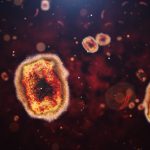








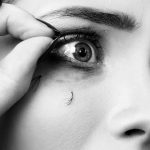







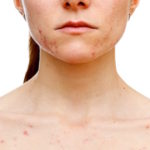










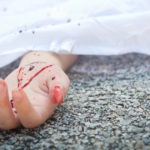


















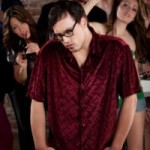








2 Comments
An important item to add for people with trichotillomania is the positive results experienced by those taking the amino acid N-Acetylcysteine (NAC) that were reported in mainstream press in 2009.
Hi Gary,
Thank you for your comment.
l completely agree that research on N-Acetylcysteine for the treatment of Trichotillomania was an important story. That is why we referenced it in the first item we mentioned in the article under “Research Findings” :
“2009 brought us closer to understanding, and ultimately finding better treatments for, Social Anxiety, Trichotillomania, and OCD“
Take care.